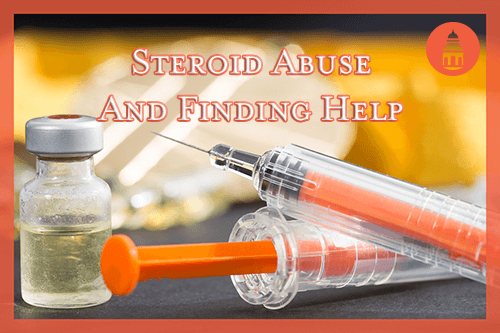
Steroids are substances that are naturally produced by the body. Cholesterol is the precursor substance that is used by the body to develop other steroids. There are many different types of naturally occurring steroids the human body.
According to the book Steroids: High Risk Performance Drugs, the two major classifications of naturally occurring steroids include:
- Catabolic steroids: This group of steroids is often referred to as glucocorticoids. They are typically produced as a response to stress. These substances help to break down other chemicals in the body and metabolize them. For instance, one common glucocorticoid, known as cortisol, breaks down glycogen to glucose, which can be used as energy. Prescription medications, such as prednisone, are catabolic steroids that can be used to reduce inflammation and treat allergic reactions; they are also used for a number of other purposes. Hydrocortisone is an active ingredient that can be used in creams to treat skin irritations.
- Anabolic steroids: These substances are derived from androgens or male hormones. They increase the production of proteins and help to build muscle and bone along with other tissues. There are a number of artificial anabolic steroids that have been developed, and they are used for the same purpose clinically. This category of drugs is also the one that individuals refer to when they are discussing steroid abuse.
There are a number of synthetically produced anabolic steroids that were originally designed to be used medicinally, and these drugs are useful in treating individuals who have a number of issues that have resulted in either muscle atrophy or tissue damage. These uses include helping individuals who have certain forms of cancer or HIV to gain weight, aiding tissue regeneration in burn victims, and helping individuals who have certain types of intestinal diseases and disorders that reduce their ability to absorb nutrients.
Anabolic steroids can be taken orally or via injections.
Some of the injectable steroids are:
- Durabolin (nandrolone phenylpropionate)
- Deca Durabolin (nandrolone decanoate)
- Depo-Testosterone (testosterone cypionate)
- Equipoise (boldenone undecylenate, which is designed for veterinary use but is illegally abused)
Some oral anabolic steroids are:
- Dianabol (methandrostenolone)
- Oxandrin (oxandrolone)
- Anadrol (oxymetholone)
- Winstrol (stanozolol)
Steroid Abuse
Figures regarding the use and abuse of steroids in the US vary a bit from source to source; however, there are a number of figures that are important to consider.
For instance, according to the Centers for Disease Control and Prevention (CDC), in 2015:
- On a national basis, 3.5 percent of high school age students reported using steroids without a doctor’s prescription at least once.
- Males are more likely to use steroids than females.
- Students of Hispanic descent are more likely to take steroids than those of Caucasian background.
- While the trend of steroid use among high school students has decreased, it is still alarming. If we assume that there are about 15 million high school students in the United States, then about 525,000 of the students are admitting to using steroids at least once without having a prescription for them.
According to the United States Justice Department, over 1 million adults between the ages of 18 and 34 reported using steroids without a prescription.
People abuse steroids for a number of different reasons, but the most common are to improve appearance by reducing fat and adding muscle or to improve performance in some form of athletics. Some of these individuals may have another formal mental health disorder, such as body dysmorphia (the perception that one’s body is flawed in some manner despite that perception not being shared by the majority of other people). While steroid abuse is most commonly associated with bodybuilding, athletes in all sports and at all levels of competition abuse steroids. In general, the governing organizations of athletic competitions outlaw the use of steroids by their competitors, and many organizations now formally test for the presence of steroids in their competitors.
The major organizations that develop and clarify the diagnostic criteria used to diagnose substance use disorders (substance abuse and/or addiction), such as the American Psychiatric Association, do not formally categorize a steroid use disorder; however, based on the general criteria for a substance use disorder, any individual who continues to use a drug or medication for nonmedicinal reasons and experiences significant distress or dysfunction as a result of their use qualifies for a potential diagnosis of a substance use disorder. This substance use includes use of steroids.
Anyone experiencing two or more of these symptoms would most likely meet the criteria for a diagnosis of a substance use disorder; however, a formal diagnosis of a substance use disorder would have to be made by a licensed mental health clinician. Individuals suspecting that they, or a loved one, may have a substance use disorder should consult with a healthcare professional. In addition, anyone who illegally uses any substance that requires a prescription to obtain could be considered a candidate for a diagnosis of a substance use disorder.
Anabolic steroids are generally classified as Schedule III controlled substances by the United States Drug Enforcement Administration (DEA), indicating that they do have medicinal uses but also carry a moderate to significant risk for abuse and for the development of physical dependence.
The outlined medicinal uses for anabolic steroids do not include the enhancement of athletic performance or use for bodybuilding purposes. Possession of any of these substances without a prescription is a felony and punishable by fines and/or imprisonment.
Call Now (619) 577-4483
Effects of Anabolic Steroid Use and Abuse
The use of anabolic steroids clinically requires one to have close medical supervision due to potential side effects or complications. Individuals who abuse these substances without being under the care of a physician risk a number of serious physiological and psychological effects, some of which can be potentially fatal.
In addition to the issues associated with the development of a substance use disorder, NIDA and a comprehensive article published in the British Journal of Pharmacology list some of the major physiological and psychological effects that can occur as a result of steroid abuse.
Physiological effects include:
- High cholesterol levels that can affect cardiovascular functioning
- High blood pressure, which can be dangerous
- Actual damage to the heart tissue
- Increased risk of heart attack or stroke
- Edema or fluid retention
- Acne
- Thinning hair
- Liver damage
- Damage to other organs, including the kidneys
- An increased risk of developing certain types of cancer
- An increased risk of developing blood-borne diseases as a result of needle sharing
- Issues with growth in teenagers
- Issues with fetal development in pregnant women
Some specific types of reproductive or sexual-related issues can develop as well.
- Men may experience:
- Sterility
- Loss of sex drive
- Enlargement of the breasts or prostate gland
- Decreased levels of hormones
- Testicular atrophy
- Women may experience:
- The appearance of male sexual characteristics that can include facial hair, a deepened voice, diminished breasts, and enlargement of the clitoris
- Infertility
- Irregular menstrual cycle
Some psychological effects that can occur as a result of anabolic steroid abuse include:
- Hostile and aggressive behaviors
- Mania
- Depression
- Anxiety
- Mood swings
- Irrational behaviors (may be severe and lead to impaired judgment)
- Delusions (particularly feelings of invulnerability)
Withdrawal symptoms associated with steroid abuse are not well described. However, NIDA reports that the primary symptoms that occur with withdrawal include:
- Fatigue
- Lethargy
- Restlessness
- Mood swings
- Serious issues with depression that can last for quite some time following discontinuation
Treatment for Steroid Abuse

The treatment of an individual who has a substance use disorder as a result of steroid abuse would begin with developing an individualized withdrawal management program for that individual. The person would initially require a full physical examination, including collecting blood and urine samples, as well as a full psychological evaluation to determine the presence of any co-occurring mental health issues. Specific medications to restore hormonal imbalances may be required in some cases.
A withdrawal management program would concentrate on addressing specific symptoms both medically and with therapy. The use of antidepressant medications or other psychotropic medications as needed in the specific case might be implemented. Specific medications for symptom management, such as analgesics for aches and pains, could also be used.
Therapy should make up the primary portion of the recovery program for an individual who has abused steroids. Substance use disorder therapy utilizing cognitive-behavioral principles would be the therapy of choice, although other interventions may be used. Cognitive Behavioral Therapy addresses the individual’s particular dysfunctional and irrational belief system, how that impacts their behavior, and then assists the individual to change their beliefs, attitudes, and behaviors. Therapy would be administered on either an individual basis, in a group with individuals who have similar issues, or via a combination of individual and group sessions.
Family therapy and other forms of social support should also be instituted when necessary. Family therapy may be particular useful for adolescents who abuse steroids.
There do not appear to be any national 12-Step groups that specifically deal with steroid abuse; however, an individual could attend any 12-Step program. As a result, the person could benefit from interacting with other individuals who have substance use disorders and using the 12-Step program to further enhance their recovery.
One aspect of treatment that is often overlooked and an important aspect of prevention is the use of psychoeducation. Many individuals get caught up in abusing drugs like steroids as a result of having unrealistic expectations for the drugs and not really understanding the dangers or the notion of a cost/benefit analysis when using substances like anabolic steroids. Education programs are useful in treatment to help individuals realize the risks of using steroids in the future. They are also extremely useful as part of prevention programs to help younger individuals develop more realistic attitudes regarding use of these drugs.
It’s Never Too Late to Get Help
